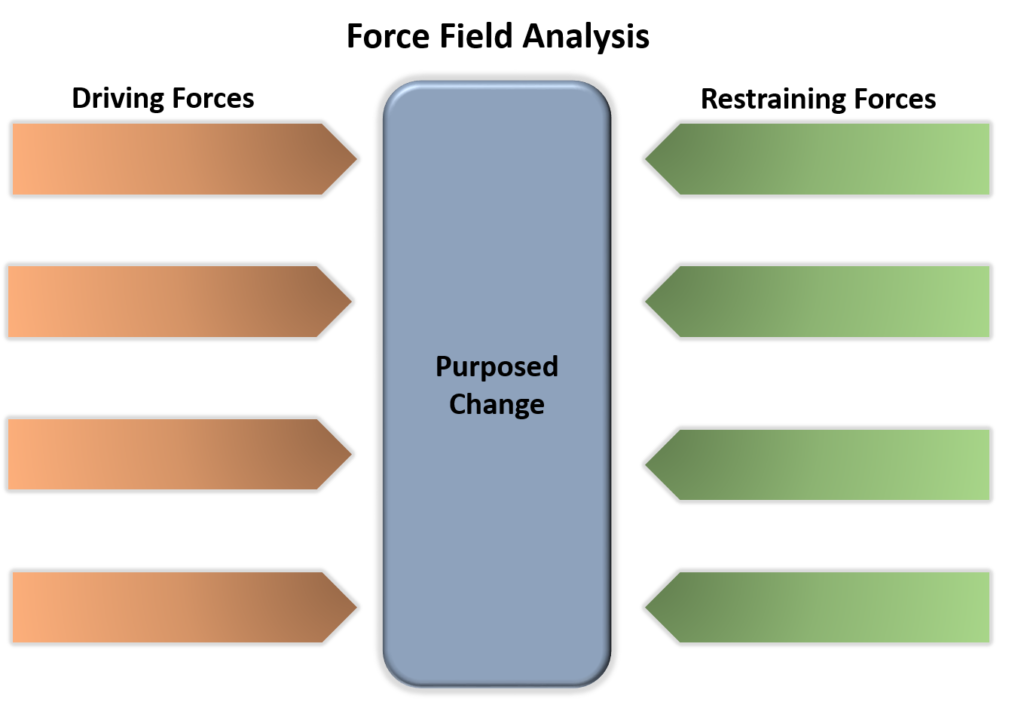When it comes to making important decisions or implementing changes within an organization, there are often many factors to consider. Force Field Analysis, a powerful strategic tool, can help you navigate the complexities and ensure a successful outcome. By understanding the benefits and limitations of this technique, you will be equipped with the knowledge to conduct a force field analysis effectively. In this blog post, we will delve into the intricacies of force field analysis, exploring its various applications and providing practical tips on how to use it to drive positive change and overcome obstacles. Whether you are a business leader, a project manager, or an individual seeking personal growth, mastering force field analysis will undoubtedly enhance your decision-making skills and empower you to achieve your desired outcomes.
What is Force Field Analysis?
Force Field Analysis is a valuable decision-making tool that assesses driving and restraining forces for decision-making. Developed by social psychologist Kurt Lewin, this technique visually represents the forces at play, allowing for a deeper understanding of the factors that influence success or failure.

FFA is based on the principle that any change or decision is influenced by two opposing sets of forces: the driving forces that push for change and progress and the restraining forces that hinder or resist change. By identifying and analyzing these forces, individuals and teams can gain insights into the dynamics and develop strategies to navigate them effectively.
The driving forces are those factors that create momentum and encourage change. They could include advantages, opportunities, incentives, or external pressures pushing to achieve the desired outcome. On the other hand, restraining forces are the obstacles, challenges, or resistance that act as barriers to change. These may include lack of resources, cultural norms, fear of the unknown, or internal resistance from individuals or groups.
The Benefits of Using Force Field Analysis
- Identifies driving and restraining forces in a situation.
- Provides a visual representation of these forces.
- Encourages critical thinking and comprehensive analysis.
- Promotes collaboration and diverse viewpoints.
- Forms the basis for action-oriented strategies.
Limitations of Force Field Analysis
- Oversimplification of complex situations.
- Challenges in categorizing forces as purely driving or restraining.
- Reliance on subjective judgments and potential bias.
- Lack of a comprehensive solution for overcoming barriers.
- The need to combine with other change management tools.
- Limited in accounting for evolving forces and changing dynamics.
- Requires regular reassessment and updating to stay relevant.
Force Field Analysis Procedure
- Define the Objective
Start by clearly defining the objective or the decision you need to make. This will provide a clear focus for your analysis.
- Identify Driving Forces:
Identify the factors that are pushing for change or supporting the objective. These can be internal or external factors such as new technologies, market trends, or organizational goals. It can be done through a brainstorming process.
- Identify Restraining Forces:
Identify the factors that are resisting change or hindering the achievement of the objective. These can be cultural norms, existing processes, or employee resistance.
- Rate the Forces:
Assign a score to each force, ranging from one (weak) to five (strong), based on its influence on the plan. Then, calculate the total scores for the driving forces (in favor) and restraining forces (against).
- Analyze the Forces:
Evaluate the impact of each force on the objective. This can be done by discussing each force’s potential consequences, benefits, and drawbacks.
- Develop Strategies:
Based on the analysis, identify strategies to strengthen the driving forces and weaken the restraining forces. This could involve implementing training programs, addressing employee concerns, or adjusting organizational policies.
- Implement and Monitor:
Put the strategies into action and regularly monitor the progress. It is important to reassess and adjust the strategies as needed to achieve the desired outcome.
By following these steps, you can conduct a practical Force Field Analysis that comprehensively understands the situation, its driving and restraining forces, and the necessary strategies to achieve your objectives. Remember, a well-conducted Force Field Analysis can be a powerful tool to facilitate effective decision-making and drive successful change initiatives.
Example
Improving Workplace Productivity
A company aimed to enhance workplace productivity by addressing various issues. They conducted the following Force Field Analysis to decided how they can focus on reducing distractions during work hours.

Conclusion
In summary, Force Field Analysis is a powerful tool for decision-making. It helps us understand the dynamics of change and offers a structured approach to assess and address driving and restraining forces. While it has limitations, its benefits, including visual representation, critical thinking, and action-oriented strategies, make it a valuable asset for achieving our objectives and driving positive change.


